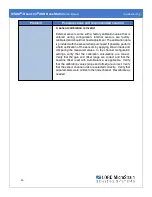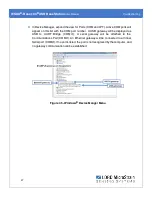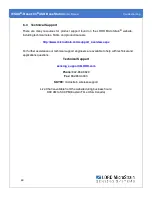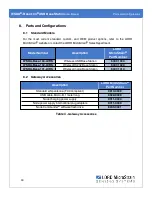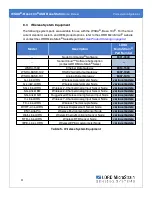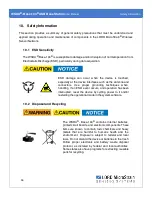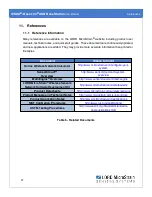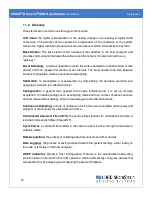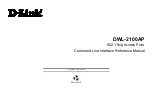
WSDA
®
-Base-104
®
USB Base Station
User Manual
References
59
EMI:
Electromagnetic Interference is an inductive or radiated disturbance that can create
signal degradation on electrical signals, including loss of data.
ESD:
Electrostatic Discharge is the sudden flow of electricity that can occur between two
charged objects of different potential that come in contact or in close proximity of each other.
Static electricity is a common source of ESD.
Event-Based Sampling:
a mode of operation in which the node sampling is started when a
sensor measurement value (threshold) is achieved.
Firmware:
the code that is programmed onto a microcontroller or similar device in an
embedded system. It includes device operation commands, conditions, memory allocation, and
many other tasks.
Gateway:
The gateway is a transceiver that attaches to the host computer and provides
communication between the software and the node(s). It is also known as a “base station”.
Host (computer):
The host computer is the computer that orchestrates command and control
of the attached devices or networks.
LED:
Light Emitting Diode is an indicator light that is used in electronic equipment.
LOS (Line of Sight):
is used in radio communications to describe the ideal condition between
transmitting and receiving antennas in a radio network. As stated, it means the antennas are in
view of each other with no obstructions.
LXRS
®
:
Lossless Extended Range Synchronized is the proprietary LORD MicroStrain
®
data
communications protocol used in the wireless sensor network.
Node:
The node is the wireless transceiver that the sensor (s) is connected to, providing
communication with the gateway. The G-Link
®
-LXRS
®
, V-Link
®
-LXRS
®
, and SG-Link
®
-
LXRS
®
are examples of nodes manufactured by LORD MicroStrain
®
.
Node Tester board:
The Node Tester board is a device designed by LORD MicroStrain
®
that
can be plugged into nodes to test their functionality.
Offset:
When describing a mathematically-linear relationship, the offset is the value where the
line that represents the relationship in a graph crosses the y-axis. The equation of a straight
line is:
y = mx+b
, where
x
is the x-axis coordinate,
y
is the y-axis coordinate,
m
is the slope and
b
is the offset.

